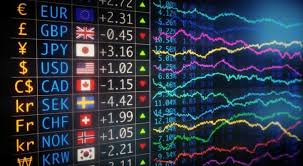
In the world of finance, forex trading stands as one of the most engaging and potentially lucrative endeavors. With the vast amount of information and the rapid changes within the market, establishing a solid trading framework is essential for success. This article will delve into various professional guidelines that form the backbone of a comprehensive forex trading framework, providing you with the tools necessary to navigate this exciting market effectively. For further insights and resources, visit forex trading framework professional guidelines forex-level.com.
Understanding the Forex Market
The foreign exchange market, or forex, is the largest and most fluid financial market in the world, with a daily trading volume exceeding $6 trillion. Unlike stock markets, forex operates 24 hours a day, five days a week, and involves the exchange of currencies based on fluctuations in their value. Successful forex trading requires a deep understanding of market mechanics, currency pairs, and economic factors influencing currency values.
Developing a Trading Strategy
Your trading strategy is the cornerstone of successful trading. It should define your trading style, risk tolerance, profit goals, and the criteria you will use to determine entry and exit points. Here are several trading styles you may consider:
- Scalping: This involves making numerous trades to capitalize on small price movements, often holding positions for just seconds or minutes.
- Day Trading: Traders open and close positions within the same day, aiming to profit from intra-day market fluctuations.
- Swing Trading: This style focuses on capturing price swings over several days or weeks, allowing traders to take advantage of market volatility.
- Position Trading: Longer-term trading style where positions are held for weeks, months, or even years, based on fundamental analysis.
Implementing Risk Management
Risk management is crucial in forex trading to protect your capital and ensure longevity in the market. Here are some essential risk management strategies:
- Set Stop-Loss Orders: A stop-loss order automatically closes a trade when it reaches a certain loss threshold, limiting potential losses.
- Define Position Size: Your position size should reflect your risk tolerance and overall account size. A general rule is to risk no more than 1-2% of your capital on a single trade.
- Diversify Your Trades: Avoid placing all your capital on one trade or currency pair. Diversification can help mitigate risks across different trades.
- Monitor Market Conditions: Stay informed about economic indicators and news releases that could affect the forex market, and adjust your trades accordingly.
Technical and Fundamental Analysis
Successful forex traders blend technical and fundamental analysis to make informed decisions. Technical analysis involves studying price charts and using indicators to forecast market movements. Common tools include:
- Moving Averages: Used to identify trends by smoothing out price data over a specific period.
- RSI (Relative Strength Index): Measures the speed and change of price movements to determine overbought or oversold conditions.
- Bollinger Bands: These provide insights into volatility and potential price reversals based on standard deviations from moving averages.
On the other hand, fundamental analysis focuses on economic news, interest rates, inflation, and other macroeconomic factors that influence currency movements. Understanding these components can give you insight into potential long-term trends in the forex market.

Utilizing Technology for Trading
In today’s digital age, leveraging technology is essential for forex trading. Trading platforms and tools can enhance your trading experience by providing real-time data, charting tools, and automated trading options. Popular platforms include MetaTrader 4, MetaTrader 5, and TradingView. Additionally, consider using trading bots, which can automate trades based on predetermined criteria, reducing the emotional stress of trading.
Continuous Education and Adaptation
The forex market is constantly evolving, influenced by economic developments, technological advancements, and geopolitical events. Continuing education is vital; invest time in learning new strategies, market analysis techniques, and updates on trading platforms. Consider enrolling in webinars, reading industry-relevant books, and engaging with online trading communities.
Building a Trading Journal
A trading journal is a valuable tool for monitoring your performance. By documenting your trades, strategies, and emotional responses, you can identify patterns in your trading behavior and areas for improvement. Include the following in your journal:
- Date of the trade
- Currency pair traded
- Entry and exit points
- Position size
- Reason for entering and exiting the trade
- Your emotional state at the time of the trade
Regularly review your journal to reflect on your trading journey and adjust your strategy as necessary.
Staying Disciplined and Emotionally Resilient
Emotional discipline is one of the most critical elements in successful forex trading. Overcome impulsive decision-making and maintain a calm mindset through a well-defined trading plan. Here are some tips for managing emotions:
- Adhere to Your Trading Plan: Stick to the rules and strategies you have established, avoiding rash decisions based on fear or greed.
- Take Breaks: If you find yourself feeling overwhelmed or emotionally charged, take a step back from trading until you regain clarity.
- Practice Mindfulness: Incorporate mindfulness techniques to help manage anxiety and improve your focus while trading.
Conclusion
Successfully navigating the forex market begins with establishing a robust trading framework that includes well-defined strategies, effective risk management, and ongoing education. As you progress in your trading journey, remember that adaptability and discipline are key. By following these professional guidelines, you can create a sustainable path toward achieving your trading goals and thriving in the forex market.
